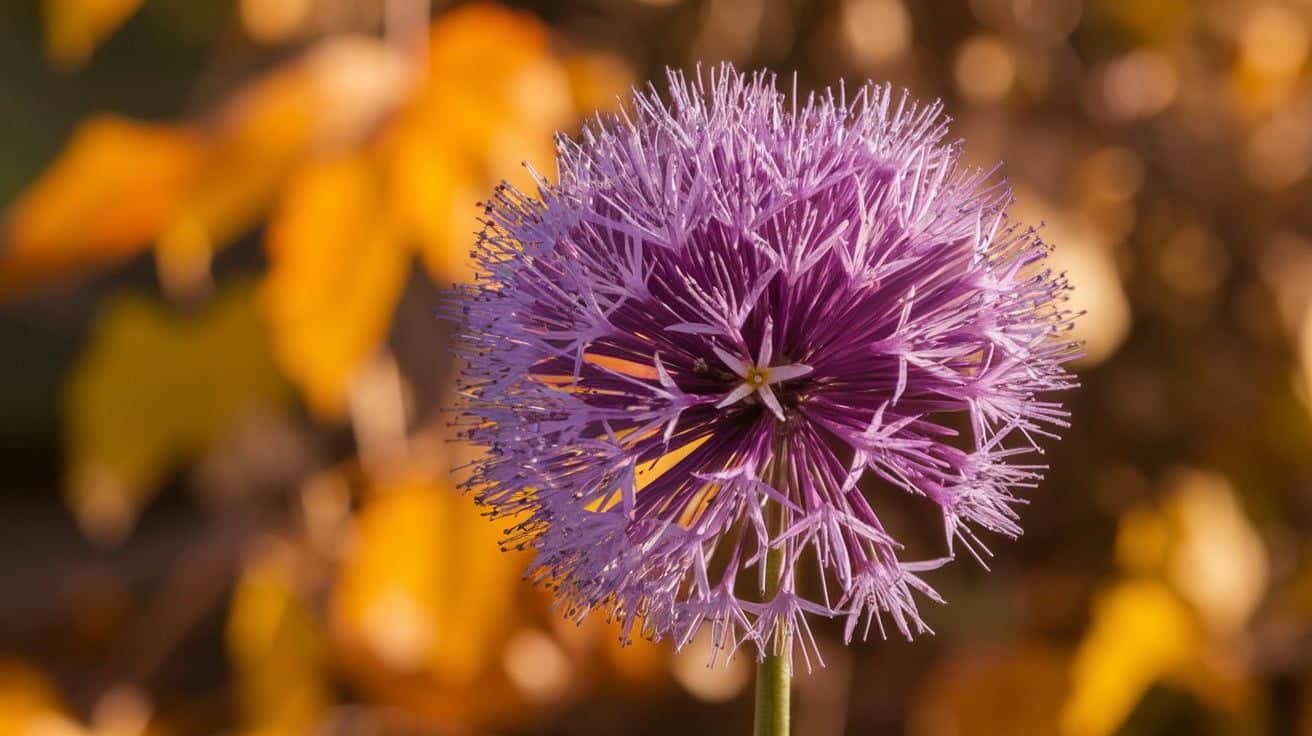“What’s your favorite breakfast food?” Six hands shoot up. “If you could have any superpower?” Suddenly, every kid wants to talk! The right question can turn a quiet morning meeting into the best part of everyone’s day.
Kids open up when asked the right questions. A good question sparks their imagination, builds community, and starts the day with energy and fun.
Some days, you need silly questions about favorite ice cream flavors. Other days call for deeper talks about dreams and goals.
This list of morning meeting questions will rescue you from those awkward silences. They work for all ages and personalities. Use them to break the ice, build classroom bonds, and create those special moments that make teaching worthwhile.
Say goodbye to boring mornings.
Why Use Morning Meeting Questions?
Morning questions help kids wake up their brains and get ready to learn. They break the ice and make everyone feel welcome. A child who feels heard is more likely to listen and join in later.
Good questions can:
- Start the day with a positive mood
- Build trust among students
- Help shy kids find their voice
- Create inside jokes and class memories
- Give you insights into what’s happening in kids’ lives
Even on busy days, taking five minutes for a morning question pays off with better focus and teamwork all day long.
Now, let’s dive into our list of questions, divided into helpful categories to match any morning mood or lesson theme.
Icebreaker Questions
Perfect for the start of the school year or when meeting new people.
-
What’s your favorite color?
-
What’s your favorite food?
-
Do you have any pets?
-
What’s your favorite game to play?
-
What’s your favorite cartoon?
-
What’s your favorite thing to do on weekends?
-
Do you like ice cream or cake better?
-
What’s your favorite holiday?
-
What’s your favorite subject in school?
-
What’s your favorite sport or activity?
-
What’s your favorite snack?
-
Do you like the beach or the mountains more?
-
What’s your favorite season?
-
What’s your favorite fruit?
-
What’s your favorite book?
-
Who is your favorite superhero?
-
What’s your favorite animal?
-
What’s the best toy you own?
-
What’s your favorite drink?
-
What’s your favorite kind of weather?
-
What’s your favorite ice cream flavor?
-
What’s your favorite movie?
-
What time do you usually wake up?
-
What’s your favorite pizza topping?
-
What’s your favorite type of music?
-
Do you like cats or dogs better?
-
What’s your favorite thing to do at recess?
-
What’s your favorite breakfast food?
-
What’s your favorite board game?
-
What’s your favorite thing to do when you get home from school?
-
Do you like to read or draw more?
-
What’s your favorite sandwich?
-
Who’s your favorite Disney character?
-
What’s your favorite part of the school day?
-
What’s your favorite video game?
-
What’s your favorite kind of cookie?
-
What’s your favorite holiday tradition?
-
What’s your favorite bedtime story?
-
What’s your favorite thing about school?
-
Do you like morning or night better?
-
What’s your favorite color to wear?
-
What’s your favorite ride at the amusement park?
-
What’s your favorite way to relax?
-
What’s your favorite memory from last year?
-
What’s your favorite cereal?
-
What’s your favorite song?
-
What’s your favorite hobby?
-
What’s your favorite thing to do with friends?
-
What’s your favorite smell?
-
What’s your favorite dessert?
Silly and Funny Questions
These are great for laughs and giggles.
-
Would you rather have spaghetti hair or pancake feet?
-
If you were a vegetable, which one would you be?
-
What sound does a giraffe make?
-
If your socks could talk, what would they say?
-
Would you rather hop like a bunny or waddle like a penguin all day?
-
What would you name your pet dinosaur?
-
If you were invisible for a day, what would you do?
-
If you could only eat one food forever, what would it be?
-
Would you rather have a nose on your forehead or eyes on your hands?
-
If animals could talk, which one would be the funniest?
-
What’s the weirdest thing you’ve ever eaten?
-
If you could fly like a bird, where would you go first?
-
What would you do if your backpack started talking?
-
Would you rather wear shoes on your hands or gloves on your feet?
-
What’s the silliest dance move you know?
-
If you could make your own holiday, what would it be called?
-
What would you do if you woke up with purple skin?
-
What if your teacher turned into a robot?
-
If your pencil had a name, what would it be?
-
Would you rather have a tail or wings?
-
What would you do if it started raining marshmallows?
-
What would your house look like if it was made of candy?
-
If you had three arms, what would you do with the extra one?
-
Would you rather sleep on a trampoline or in a hammock?
-
If you were the size of an ant, what would you do?
-
If your voice sounded like a trumpet, what would people say?
-
Would you rather wear a cape or a crown every day?
-
If you could only walk backward, how would life be different?
-
What if your hair grew spaghetti noodles?
-
What would you name a flying cow?
-
Would you rather have jellybeans for teeth or waffles for ears?
-
What’s the funniest dream you’ve ever had?
-
If your fingers were crayons, what color would each be?
-
If you could only eat upside down, how would you do it?
-
What if your shadow had a mind of its own?
-
Would you rather swim in a pool of chocolate pudding or strawberry jam?
-
If your shoes squeaked every time you took a step, what would you do?
-
What’s the funniest noise you can make?
-
What if your backpack had wings and flew around the room?
-
If you had a talking chair, what stories would it tell?
-
What animal would be the worst pet?
-
If you could be any emoji, which one would you be?
-
What’s the strangest name you can think of?
-
Would you rather have a pet dragon or a pet unicorn?
-
If you had to wear a silly hat every day, what would it look like?
-
If your bedroom turned into a zoo, which animal would be your roommate?
-
If you could make your ice cream flavor, what would it be?
-
Would you rather have to sing everything you say or dance everywhere you go?
-
What if your shoes were made of spaghetti?
-
What would you do if your lunchbox was full of slime?
Get-To-Know-You Questions
These help classmates learn more about each other in a friendly way.
-
What’s something you’re really good at?
-
What’s one thing you’re trying to get better at?
-
What do you like to do after school?
-
Who do you look up to?
-
What’s something you’ve done that you’re proud of?
-
What’s your favorite way to help others?
-
What’s one thing you want to learn this year?
-
What’s something that makes you feel happy?
-
What’s your favorite thing to do with your family?
-
If you could learn any skill, what would it be?
-
What’s your favorite memory from a birthday?
-
What makes a good friend?
-
What’s something kind someone did for you?
-
What’s your favorite thing to do on the weekend?
-
Do you like big groups or small groups better?
-
What’s your favorite family tradition?
-
What’s something that makes you laugh every time?
-
If you could visit anywhere in the world, where would you go?
-
What’s your dream job?
-
What’s your favorite way to spend a rainy day?
-
What makes you feel brave?
-
What do you love most about your school?
-
What’s one thing that always cheers you up?
-
What’s your favorite way to relax?
-
What makes you feel calm?
-
What’s your favorite place to visit with your family?
-
What’s something new you tried recently?
-
What’s your favorite thing to do outside?
-
What’s one thing you wish people knew about you?
-
What’s a special talent you have?
-
What’s something that scares you a little, but you want to try?
-
What’s your favorite thing to do during summer break?
-
Do you like being the leader or part of the group?
-
What’s your favorite thing about your teacher?
-
If you could make a school rule, what would it be?
-
What do you want to be when you grow up?
-
What’s one thing you’ve taught someone else?
-
What’s your favorite way to celebrate something special?
-
What makes your family special?
-
What’s something silly that always makes you smile?
-
What’s your favorite day of the week and why?
-
What’s one thing you do really well?
-
What’s your favorite way to be creative?
-
Who’s someone in your life who always makes you laugh?
-
What’s your favorite class at school?
-
What’s one thing you want to get better at this year?
-
What’s something fun you do with your friends?
-
What do you like most about yourself?
-
What’s a cool fact you know?
-
What do you like doing when you’re alone?
Imaginative and Creative Questions
These get kids thinking and dreaming big.
-
If you opened a store, what would you sell?
-
If you had a robot, what would it do for you?
-
What would you build if you had unlimited LEGO bricks?
-
If you could build your dream playground, what would be on it?
-
If you could design your own planet, what would it be like?
-
If you made a new animal, what would it look like?
-
If your bed could fly, where would you go first?
-
What would your dream treehouse have in it?
-
If you could live in a movie, which one would it be?
-
What would your dream house look like?
-
If you could invent a toy, what would it do?
-
What would your dream school be like?
-
If you were a teacher, what subject would you teach?
-
If you could create your holiday, what would people do on that day?
-
If your room could change into anything, what would it turn into?
-
If you had a pet dragon, what would you name it?
-
What would you put in a secret hideout?
-
If you had a magic paintbrush, what would you paint?
-
If your backpack had a secret power, what would it be?
-
What would you do if you had a time machine?
-
What’s something you’d like to invent?
-
What would your dream amusement park have?
-
If you could make your own video game, what would it be about?
-
If your toys came to life at night, what would they do?
-
If your clothes could talk, what would they say?
-
What would your dream lunchbox look like?
-
If your room had a secret button, what would it do?
-
If you could talk to animals, who would you talk to first?
-
What kind of car would you build if you could design one?
-
If you could jump into any book, which one would it be?
-
What’s something fun you’d add to your classroom?
-
If you could build anything out of cardboard, what would it be?
-
If your shoes could take you anywhere, where would you go?
-
What would you add to your dream playground?
-
If you were the mayor, what rule would you make?
-
If you could turn invisible, what would you do first?
-
What kind of cake would you bake if there were no rules?
-
If you were a superhero, what would your power be?
-
What would your superhero costume look like?
-
If your room could talk, what secrets would it tell?
-
What would your dream weekend be like?
-
If you could live in a castle, what would it look like inside?
-
What kind of pet would you have if you could choose any creature?
-
If you could shrink and explore something tiny, what would it be?
-
If you made your own cereal, what would it taste like?
-
What would a school on the moon be like?
-
If you could turn your school into anything fun, what would it be?
-
If you had a giant box of art supplies, what would you make?
-
What kind of world would you create if you had a magic wand?
-
If your shadow had a personality, what would it be like?
Thoughtful and Kindness Questions
These questions help kids think about kindness, feelings, and being a good friend.
-
What’s something kind you did recently?
-
How do you cheer up a sad friend?
-
What makes someone a good listener?
-
What’s something someone did that made you feel special?
-
What does being a good classmate mean?
-
How do you show respect to others?
-
What’s something nice you could say to someone today?
-
What do you do when someone is feeling left out?
-
How do you help someone who’s struggling with something?
-
What’s something you love about your family?
-
What’s one way to make someone smile?
-
What’s one small way you could help your school today?
-
What do you do when you see someone being bullied?
-
What makes you feel appreciated?
-
How do you show kindness without using words?
-
What’s something nice you could do for your teacher?
-
When was the last time you said “thank you”?
-
What do you do when you make a mistake?
-
What’s something you can do to help at home?
-
How do you feel when someone compliments you?
-
What’s one way to make a new student feel welcome?
-
When have you felt really proud of someone else?
-
How can you be a good friend during a game?
-
What’s one way to make the world a better place?
-
How do you feel when you do something kind?
-
What’s something kind someone said to you?
-
What’s a nice surprise you could do for a friend?
-
How can you show someone you care without talking?
-
What’s one thing you’d like to do to help your community?
-
What’s something you do to stay calm when you’re upset?
-
What’s something you could forgive someone for?
-
How can you show kindness to someone younger than you?
-
What’s one thing you’re thankful for today?
-
How can you be a good teammate?
-
What’s something thoughtful someone has done for you?
-
What’s one way to be helpful in class?
-
How can you show patience when you have to wait?
-
What’s a way to include someone who’s alone?
-
What do you do when someone makes a mistake?
-
What do you think being “generous” means?
-
What’s something kind you can do without spending money?
-
What’s one way to show respect for other people’s things?
-
What’s something you’re really thankful for this week?
-
What’s one way to show kindness to someone you don’t know well?
-
What do you do when someone is having a bad day?
-
What’s a time you helped someone without being asked?
-
What’s something kind someone in your class did lately?
-
What’s one way to be more helpful at school?
-
How do you feel after doing something kind?
-
What’s a kind word you can say to yourself?
Would You Rather Questions
Fast, fun choices for high-energy mornings or when time is short.
-
Would you rather eat only pizza or only ice cream for a week?
-
Would you rather fly or be invisible?
-
Would you rather be really fast or really strong?
-
Would you rather live on a boat or in a treehouse?
-
Would you rather be a giant or the size of an ant?
-
Would you rather have a pet lion or a pet whale?
-
Would you rather play in the snow or the sand?
-
Would you rather always wear pajamas or a costume?
-
Would you rather eat broccoli or carrots every day?
-
Would you rather have a robot helper or a flying car?
-
Would you rather live in a house made of candy or toys?
-
Would you rather sleep all day or never sleep?
-
Would you rather go to school on a spaceship or underwater?
-
Would you rather have rainbow-colored hair or glow-in-the-dark skin?
-
Would you rather play with LEGOs or Play-Doh?
-
Would you rather slide everywhere or bounce everywhere?
-
Would you rather only whisper or only shout?
-
Would you rather have 4 arms or 4 legs?
-
Would you rather live without a TV or a computer?
-
Would you rather always eat cold food or always eat hot food?
-
Would you rather ride a rollercoaster or a Ferris wheel?
-
Would you rather never brush your teeth or never take a bath?
-
Would you rather wear clown shoes or a pirate hat every day?
-
Would you rather speak every language or talk to animals?
-
Would you rather always be early or always be late?
-
Would you rather never have homework or never have chores?
-
Would you rather have popcorn or cotton candy?
-
Would you rather be a cat or a dog?
-
Would you rather have a picnic or a movie night?
-
Would you rather have school inside a zoo or an aquarium?
-
Would you rather drink only juice or only milk for a year?
-
Would you rather eat pancakes or waffles forever?
-
Would you rather walk on your hands or roll everywhere?
-
Would you rather live in a world made of paper or plastic?
-
Would you rather play soccer or basketball every day?
-
Would you rather wear sandals in the snow or boots in the summer?
-
Would you rather be super tiny or super tall for one day?
-
Would you rather have a pillow fight or a water balloon fight?
-
Would you rather sleep in a tent or a cabin?
-
Would you rather be the funniest kid or the smartest kid in class?
-
Would you rather eat only sweet foods or salty foods?
-
Would you rather visit space or the deep ocean?
-
Would you rather ride a dragon or a magic carpet?
-
Would you rather drink pickle juice or hot sauce?
-
Would you rather have a tail or animal ears?
-
Would you rather be a famous chef or a famous athlete?
-
Would you rather have to sing everywhere or dance everywhere?
-
Would you rather go back in time or jump to the future?
-
Would you rather live without sweets or without screen time?
-
Would you rather swap lives with your teacher or your pet?
Make Every Morning Matter!
The right questions can turn ordinary mornings into moments of connection and growth. As you try these questions with your students or children, you’ll likely find which ones spark the most joy and thoughtful responses in your group.
Don’t be afraid to adapt these questions or use them as starting points for your ideas. The goal isn’t just to fill time but to build a community where every voice matters.
Keep a few favorites handy for those hectic mornings when you need a quick win. Share your success stories with other teachers or parents, too!
Ready to change your morning meetings? Bookmark this page, pick a category that matches tomorrow’s mood, and watch those sleepy faces light up with excitement to share.




























































